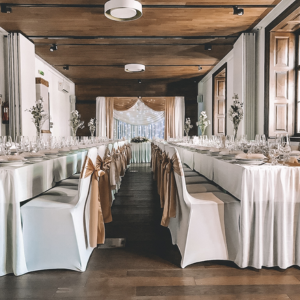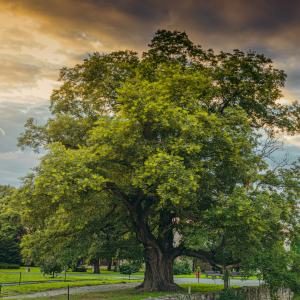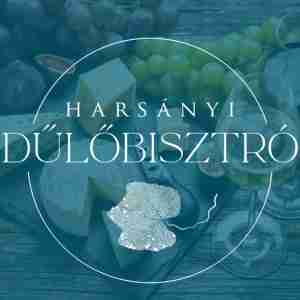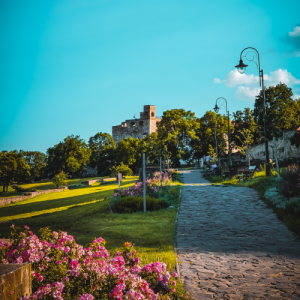- +36 30 183 9253
- info@dulobisztro.hu
- Monday - Tuesday: CLOSED, Wednesday - Thursday: 11:00 - 20:00,Friday - Saturday: 11:00 - 21:00, Sunday: 11:00 - 19:00
The Tarn of
Megyer Hill
If you happen to be hiking in the Zemplén Mountains and you seek a genuinely special natural wonder, it is definitely worth making your way toward Sárospatak. The more than 300-metre-high Megyer Hill, located north of the town, holds one of Hungary’s most beautiful hidden natural treasures, the Tarn of Megyer Hill. The popular tourist destination is a prime example of the fact that even man-made structures can coexist with the ever-changing natural environment in perfect harmony.
Cuvée Event House
The Cuvée Event House was born by renovating and converting an 18th-century building. By conserving the cross-vault hallways, the original wooden doors as well as the wine cellar, our aim was to retain the bourgeois, rustic atmosphere of the building, and at the same time to combine it harmoniously with modern characteristics to meet new needs. And for those who are looking for something unconventional and out of the ordinary...
The Reformed Church of Sárospatak
The Reformed Church of Sárospatak is one of the most mesmerising architectural heritage monuments of Sárospatak. The church was built between 1771 and 1781 in Baroque style. Though the Baroque style is the dominant one in the building, the ceiling of the three-bay nave of the church displays traces of some eclectic influence. The choir of the church is home to a gallery, which hosts temporary exhibitions.
DŰlőbisztró
Have a rest, wanderer! Located in the very heart of Harsányi Winery, Dűlőbistro is awaiting all guests with cool refreshments. Our bistro also functions as a production facility where the grapes harvested at the estate come to life and are turned into smooth, silky aszú wines, world-renowned single vineyard beverages and other specialties typical of the Tokaj region. Those with a curious mindset can attend guided tours to delve deeper into the process of winemaking.
Via Ferrata
Those who seek some adventure can try the country’s fourth Via Ferrata course which has a combined length of 650 meters with several routes of varying difficulty running on the completely vertical walls of the Megyer Hill Tarn. A Via Ferrata course is a type of mountain trail which is constructed of metal cables, ladders and bridges that allows visitors to access places where previously only professional climbers could go.
The Oldest Tree
The most emblematic tree of the castle’s courtyard is the old Japanese pagoda tree (Sophora japonica). According to estimates, the iconic tree could be as old as 180-190 years old. This Methuselah of trees started aging very rapidly over the past few years and has lost most of its canopy as a result. The museum, however, was determined to try and save the pride of the castle’s courtyard. In 2017, professionals conducted an ultrasound examination of the tree, subsequent to which in 2018, the tree received state-of-the-art treatment and its branches were anchored. As a result, it started to grow again, and its blossoming foliage is definitely a sight to be marvelled at.
tokaji
WINE TASTING
Make any anniversary, birthday, family or friendly get-together an unforgettable event by surprising your loved ones with a wine tasting experience. Harsányi Winery is welcoming guests at two different venues: “city-dwellers” are welcome to enjoy our services at Cuvée Event House, while those with the spirit of a wanderer are encouraged to pay a visit to our Dűlőbistro to try the award-winning specialties of our winery in the shade of our grape arbours and surrounded by the waving slopes of Tokaj.
The Reformed Boarding School of Sárospatak
This school is one of the oldest educational institutions in the country still in existence; it was established by Péter Perényi (Crownguard) in the spirit of the Reformation in 1531. Throughout the centuries, many of the great figures of Hungarian history spent their schoolyears in the Boarding School of Sárospatak which is considered as one the most prestigious institutions in the country.
The Rákóczi Caste
The Castle of Sárospatak is one the best-preserved group of buildings from the late Renaissance period. The castle is even depicted on Hungary’s 500-forint banknote. The complete renovation of the building took place in the 1960s, and ever since it has been one of the most frequently visited tourist destinations in the country; in recent years, the castle welcomed more than a hundred thousand visitors annually. The castle’s Rákóczi exhibition earned the institution the Museum of the Year award in 2003.
goodevent kft.
Headquarters: 1165 Budapest, Hangulat street 14.
Business address: 3950 Sárospatak, külterület 0785/1.
VAT number: 24394763-2-42
REGULATORY INFORMATION
- Municipal registration number: 953-B/2021
- OKNYIR registration number: 159940/B/1
CONTACT
FOLLOW US
DATA PROTECTION
- Hosting: C-NETWORKS
- Privacy statement
- Terms and Conditions
- Blog








